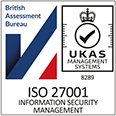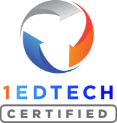Dr Sarah Hyde, Year 1 Convenor, PBL and Portfolio Stream Lead from Charles Sturt University on ‘Preparing for Practice in the Community.’ in Rural Medicine. This recording is from our 2022 Brisbane, Australia MiniBash community event. Videos are for educational personnel only and require a live educational email to watch. You can read the video transcript below.
Transcript:
Hi, everyone. I’m Sarah, and it’s a pleasure to be here today virtually to talk to you about how are you PebblePad in the School of Rural Medicine at Charles Sturt University to support will and employability skills development. In the picture here is our newest medical education building, which opened just a couple of years ago.
The School of Rural Medicine is based in orange, and this is our small campus where everyone knows each other really well.
We’re about a couple of kilometers away from the town center. And with the critical role doctor shortage, we really want to ensure our graduates have the skills to connect with community to be resilient and adaptable, but also being advocate for change and adopt a rural strengths based perspective.
Now, this is really evident here in the quote from one of our second year medical students Heidi, who really sees becoming a doctor as a form of activism.
The School of Rural Medicine offers a program in conjunction with the West Sydney University, so we deliver the same curriculum but we have contextualized it to our local rural environment.
So we offer end to end training as an undergraduate course, all of our students a rural origin, that’s a mandate of our admissions criteria by the government.
Now surprisingly, for us, the majority of our students are actually mature age. And so they do come to us having already had some experience working, not always in the health, indoor three, but from a variety of different backgrounds as well.
We really want to graduate doctors who are patient centered and have that sense of belonging to community who are highly professional in their practice and self regulated in their learning. Now, this is because in the first two years, they are with us on that orange campus.
They spend one day a week in the hospital.
They do a two week placement in each of years one and two. But once they move on to years three to five, they actually spread across the state at one of eight different clinical schools attached to the school of rural medicine.
So, it is imperative that we can ensure students have the appropriate degree of professionalism and the ability to regulate their learning by the end of year two. Because we won’t have as much face to face contact with them in years three to five. Now, we really develop these skills through problem based learning, and through many different small group learning exercises throughout the first two years. They’re highly immersed in the clinical environment, and they’re really tight knit and they work very well together in Teams.
The professional portfolio is really the centerpiece of the MD.
It is the one piece of assessment, which follows the students through from the beginning of first year to the end of fifth year of the course.
It’s also an authentic assessment because it mimics what occurs in practice as they apply for fellowship for their specialty training, and it provides a record and an ongoing commentary about their developing identity as a future medical professional, their degree of insights that they are developing and it provides an evidence base to showcase their engagement with learning across all facets of the course. But more importantly, the development of their reflective practice.
This has really fostered through the portfolio advisors who meet with students twice in year one, once in year two, and students must reflect on each interview ahead of the upcoming one. So we really get to see how students have engaged with the feedback and how they have improved their performance on different elements of the course.
This is an example of the back end of our PebblePad for U1.
So you can see here that we have a variety of workbook to deliver curriculum, but we also provide a variety of templates for students to create their learning plans, their portfolio, self assessments, tutor, feedback for problem based learning, and also the portfolio advisor feedback forms are in there as well. So, each of these worksheets and templates can be embedded in the students’ portfolios and is a way to have the ongoing conversation with their tutors, but also to showcase the ways in which their self assessments change over time and their gradual development of their capacity for in site and reflective practice.
So, this is an example of a sheet from one of our workbooks, and typically each case has a persona, a picture that describes the patient characteristic and the students are given a set role within the case.
So, you can see on the right hand side that they’re learning is scaffolded, throughout the case. They must progress through hypothesizing about the cause of the problem through to taking a history undertaking some investigations, evaluating the lab reports, and then creating a case summary. So all that is done collaboratively.
And there is a clinical tutor who facilitates that.
On the left hand side is one of the scaffolds that we’ve started using to really orient the student to the focus for the case. They really need to be thinking about what and where, how and when. We’ve simplified that clinical reasoning, based on the student feedback.
So this is another example of a page from Atlas whereas the year convener, I can easily eyeball how many students have submitted their self assessments, have they submitted it on time?
And it allows me to filter through because we use Pebblepad for so many assessments.
Before I meet with the students individually to give them feedback twice in the year, I can easily navigate to see Well, what have they said about themselves in terms of the PBL?
So all of the self assessments are formative, and it forms the basis for students to have a conversation with their PBL tutor or if it’s a portfolio self assessment with their portfolio advisor.
And the students must be direct in what they want to seek feedback about.
So, again, I can filter I can filter down to the group level, so I can see for each tutor which people in their group have submitted a self assessment, and I can also see for each tutor, have they released a feedback and then I can have a look at what the feedback said. So I really feel I have a good understanding of the students’ development of insight, professionalism, communication, and their ability to reflect on how they learn through the use of PebblePad and being able to really easily eyeball what they’re saying and what the tutors are saying.
So here’s a list of all the assessments that we do use PebblePad for, and I can go into any one of these and really see where the student is sitting.
A lot of these Well, all of these tasks, they’re non graded. So, these are all narrative qualitative subjective assessments by students and the tutors. So for me to have a birds eye view about students’ capacity to self assess in a relation in relation to a whole variety of different elements of the course, is really nice.
So here’s an example of a student self assessment of problem based learning and a criteria that we’re using. We’re looking at the students’ ability to evaluate their own approach to learning, how well they think they explain things to others, what the depth of knowledge is like, and then these professionalism elements of engaging in discussion and demonstrating respect.
Now, importantly, the bit I’m most interested in is this narrative, where they are identifying what areas they want to So the tutor, this forms the basis of the discussion with the tutor, who will give them feedback if they’re underrating or overrating them themselves. But more specifically can address these areas of what they want to improve. And it gives the students the opportunity to seek more feedback and to hear from a clinician about their strategies and what has worked well for them.
Here’s another example of a tutor’s feedback this time. So I can really see the relationship the tutors have with the students here as well, and I can see what the tutors have said. So when I meet with the students, I can build on what has already been noted.
So With community placements, students just spend one day a week in year one and two in non clinical settings, specifically to focus on the social determinants of health.
Now, many of our students recognize the privilege backgrounds that they come from and have reflected quite nicely on what they’ve learned and what they were confronted with.
So this is an example of the workbook that we use, but also it’s called medicine in context. Where you can see we’ve used the workbook to deliver some of the curriculum, but also we’ve embedded some worksheets in here, where we want students to reflect on their experience in the community based setting.
Each assessment task has its own learning objectives, and here’s one really focused on the patient centered care. So whilst on their placement, students interview a patient, and then they must retell that patient’s story in the first person, and then they present it back to their group.
So, the portfolio framework speaks to our intentions to graduate doctors who have who have patient centered care that are focused. Who are aware of the social determinants of health and the role that they play in the community, but who can also look after their own well-being and demonstrate ethical practice and teamwork, as well as the knowledge required to practice as a doctor So, students have to provide evidence of how they have achieved each of these learning objectives, and that evidence and reflection forms the basis of a conversation with their folio advisor.
This is an example of One Student’s portfolio, and you can see how clean I think it is, how easy it is for the portfolio advisor to navigate through all the different domains in which students must supply evidence for Students also develop a learning plan, and they have a reflection on their previous interview. So this is an opportunity to see how they have engaged with the feedback given previously.
And this is an example of the self assessment that students have embedded in their portfolio. Again, we’ve used a template from Pebel pad to help them set some smart learning goals.
And this is another example.
In particular, this student has focused on how they would like to develop their understanding of anatomy.
And again, we see another way in which students are structuring their reflection using the template in PebblePad. This event analysis future planning overall reflection really helped students tighten their reflection, which made it easier for the advisor to give feedback.
And they’ve specifically engaged with the feedback from the previous interview, which really helps to evidence their evaluative judgment.
This is an example of the feedback template used by the portfolio advisor.
To showcase that students have actually been satisfactory in their evidence, their learning plan, and their interview.
And then we can also create spaces where they can put some summaries in as well.
So we do want to graduate doctors who are patient centered who have that sense of belonging to community, but more importantly, the capacity to regulate their learning, to be proactive, knowledgeable, and to evidence of professionalism because they are embedded in communities. From year three of the undergraduate program. So we need to be assured that they have these skills or are well on their way when they leave us at the end of year too.
Thank you very much for listening, and please don’t hesitate to get in touch if you have any questions.







